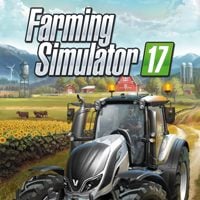Fertilizers
This chapter contains information on the useful methods of fertilizing your lots, and a few words about new machines, such as weeder. Available fertilizers are as follows: normal fertilizer, sprayer, slurry, manure, compost, and fodder radish.
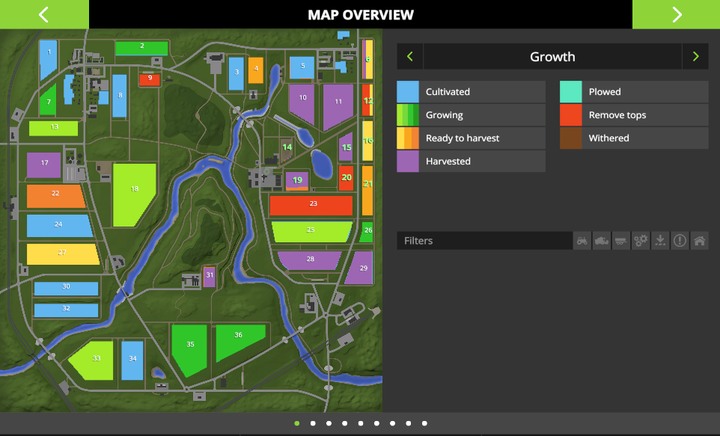
Use fertilizers to improve your crops. One should fertilize before sowing or right after, and depending on the difficulty level (fertilization level option). In case of level 3, one needs to fertilize three times in all the stages of growth (to gain +90% of crops). To gain the last 10%, use the plow before sowing. In case of option 1, all you need to do is use fertilizers once. The fertilization level of your fields is visible on your map when you access soil components.

The process of fertilization can be combined with other activities - e.g. sowing if you have the right seeder (Amazone ED 3000-C for instance). Unfortunately, they allow only artificial fertilizers: powdery of liquid. One way or another, the very process is quick and shouldn't cause any problems.
There are five available methods of fertilization - they differ in terms of visuals/price/required time. In the difficulty settings, one can choose if employees can refill fertilizers by themselves (money is taken from your account).
List of Fertilizer Prices
Each fertilizer has to be paid for, unless you use waste from your own animal husbandry. You should also know that your employee (via option in the game's settings) can buy manure, as well as chemical fertilizers. The list below contains approximate values, which can initially help you choose an optimal method of fertilizing. The values are given per 1ha, for the normal difficulty level, with a certain approximation. You should also consider that the excess manure on the chosen lot is often thrown away, which can be seen from the statistics.
Fertilizer | Price |
Fertilizer | 300$ |
Sprayer | 600$ |
Slurry | 400$ |
Manure | 200$ |
Compost | 400$ |
Slid fertilizers and sprinkling
Solid fertilizers - use spreader;
Sprinkle- use sprinklers;
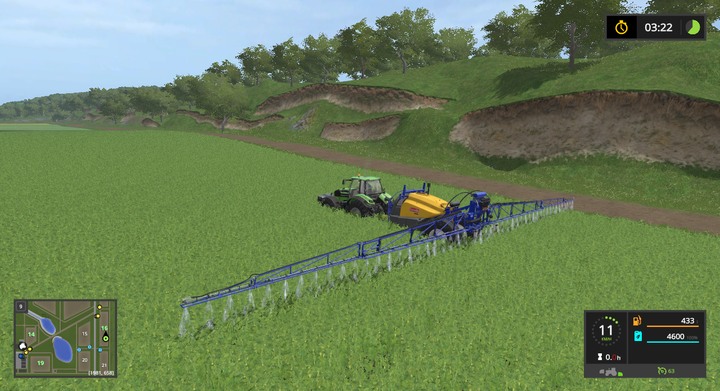
Sprinklers have a wide range of action, low weight, and low speed. By purchasing Amazone you can attach an additional container in front of the vehicle. Spreaders move faster, have slightly narrower range - in terms of cost, both options are similar.
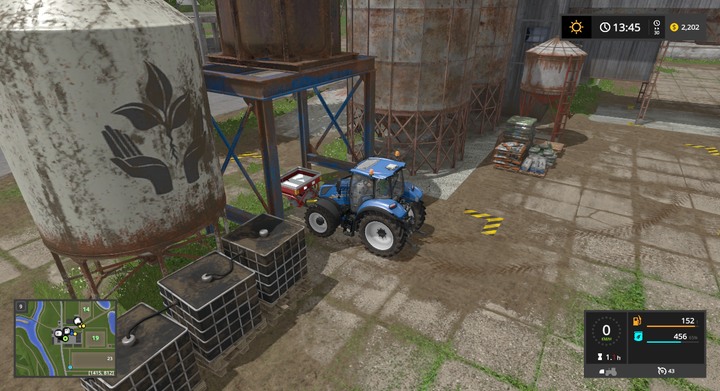
To equip your machines with the right substances, go to maneuver feeder in your headquarters (Sosnovka) - you can purchase as much as you want or purchase pallets in the store. Its high cost makes artificial fertilizers an option to reconsider (about 20% of income is spent on fertilizers).

Initially, you should choose the cheapest sowers, but only those that offer the ability of simultaneous fertilizing (a sack or liquid container icon), such as Amazone ED 300-C (13 000$). In other cases, spreader such as Kverneland Exacta EL 700 (6 300$), which can be installed on the front of a tractor, can do the trick. However, remember that fertilizer is kind of expensive, and usage of machines that work slow (or a weak tractor) will result in increased superfluous use of fertilizer.
Manure and slurry

Both are byproducts of raising pigs and cows. Around 10 farm animals is enough to keep 3 hectares of fields fertilized - use manure and slurry on different fields. If you want to grow potatoes, a set of Zunhammer ZuniDisc + SKE 18.5 PUD may be a smart move. This will allow you to cultivate and use natural manure, and save some time in the field. Manure spreaders are not very effective, but at least you won't pay extra for fertilizers.
Important - If you want to use your own fertilizer, and your employees are to use it by filling the tanks automatically, enable this option in the menu. You can choose whether they are supposed to get it from digestate tank, slurry tank or a manure heap, and from which husbandry - pigs or cows. Otherwise, if the automatic fill option is enabled, all used fertilizer will be bought for money.
Compost
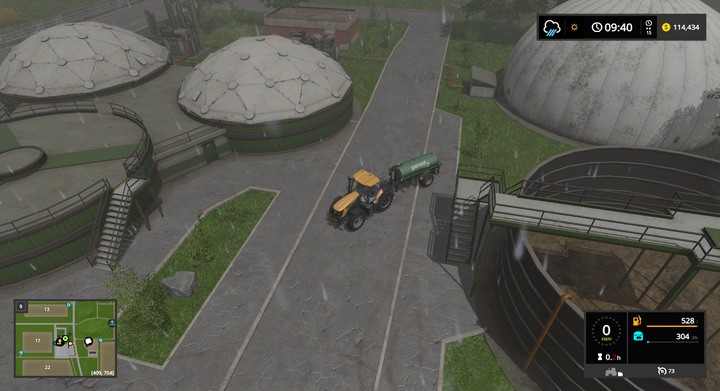
If you don't want to start a husbandry, and you are not happy with paying for fertilizer, there is an other option present - compost. You'll can get it in biogas plant by delivering ensilage - it is a byproduct of grass or chaff, and it can be produced using a (expensive) forage harvester from practically any plant, or from a husk using a cheaper device (from Forage Harvesters category) - Pottinger MEX 5 (38 000$).
Selling ensilage in biogas plant nets high payments, and a side product - compost. It's located in a neighboring, black tank. All you have to do is drive a slurry trailer, and fill it.
Oil radish
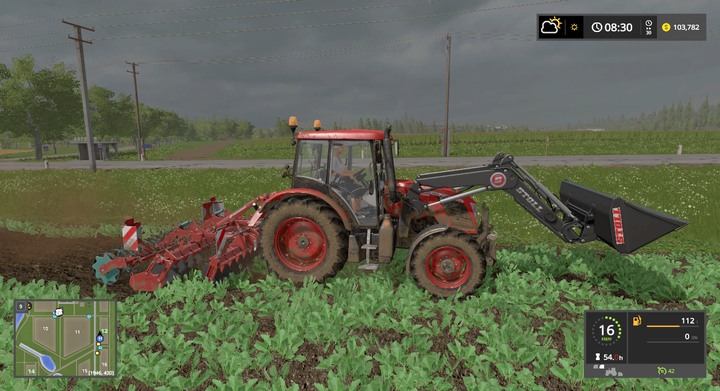
Farming Simulator 17 offers oil radish. It can be used as a natural (and free as you only pay for the seeds). All you need to do is to sow radish on a previously prepared field. As soon as first leaves are available, tillage the field once again, and it will be fertilized as if you used a fertilizer (it takes only a couple of hours for the first leaves to appear). It is a good method early in the game, or in case of large fields with valuable crops. Although you have to take another round in the field, but using a fertilizer would be pretty much the same. The only advantage is that using a 15m long sprinkler is much faster, so use this method as an alternative and not a constant solution.
Hint: you don't need to use a plough for tillage - cultivator will suffice.
Weeder
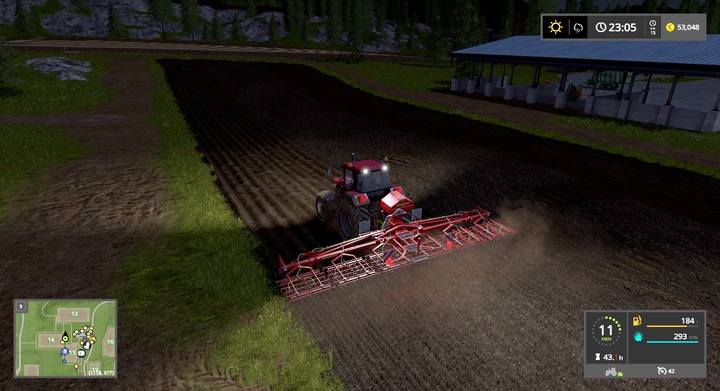
Weeder is the second novelty that allows free "fertilization" of a field. You can use them only in the early (0, 1 and 2) states of the plant's growth to remove weeds, allowing easier growth for plants. In case of required, set 3 fertilizings, using a weeder will replace one of them (on the map, the lot will be seen as fertilized). A better model of the weeder is also available, which not only gives the first level of fertilizing, can also sow radish if the soil is plown - meaning a double sowing in a short amount of time - it may not be the most optimal method, but it's free.
You are not permitted to copy any image, text or info from this page. This site is not associated with and/or endorsed by the Focus Home Interactive or GIANTS Software. All logos and images are copyrighted by their respective owners.
Copyright © 2000 - 2025 Webedia Polska SA for gamepressure.com, unofficial game guides, walkthroughs, secrets, game tips, maps & strategies for top games.
